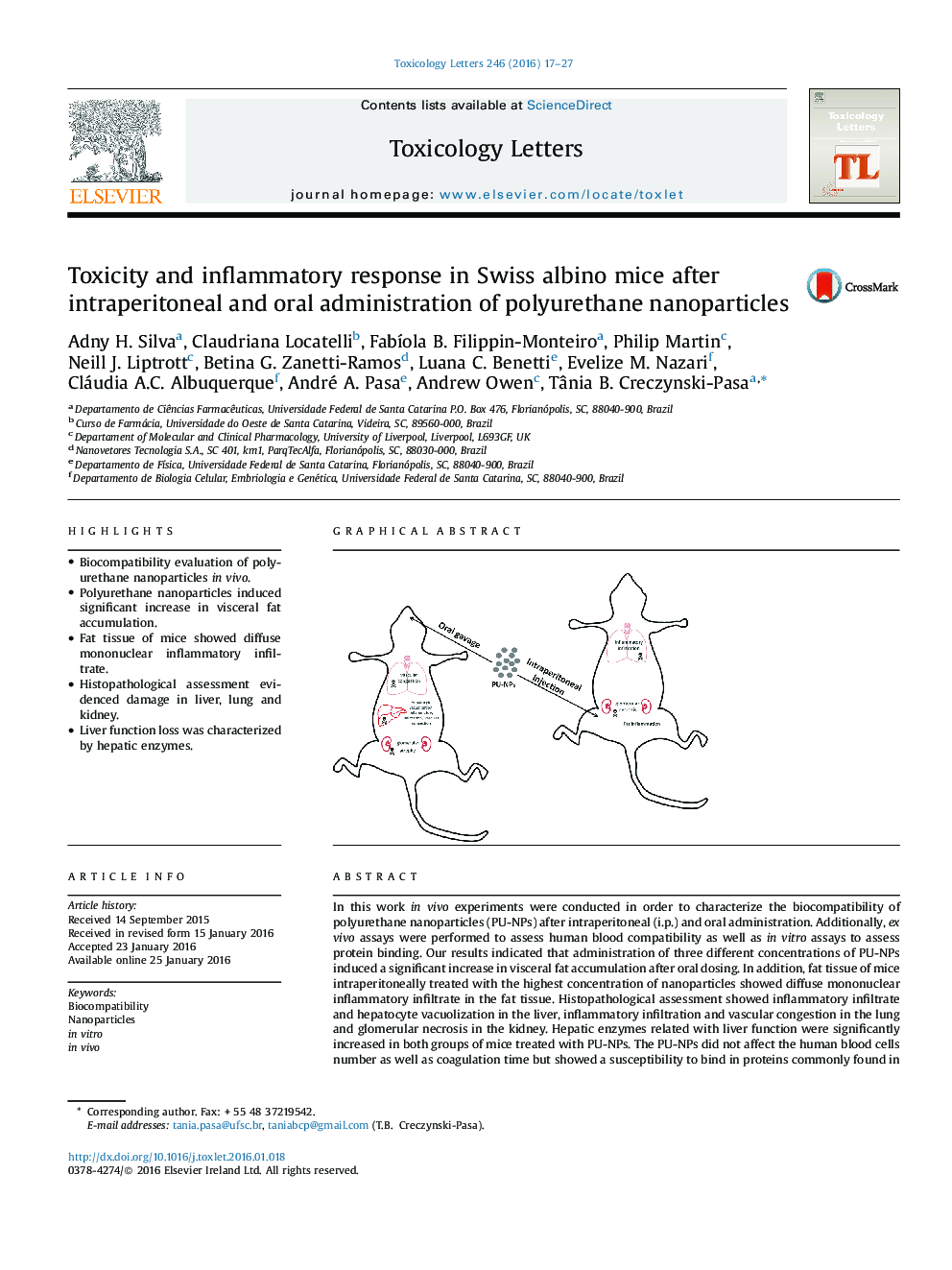| Article ID | Journal | Published Year | Pages | File Type |
|---|---|---|---|---|
| 2598499 | Toxicology Letters | 2016 | 11 Pages |
•Biocompatibility evaluation of polyurethane nanoparticles in vivo.•Polyurethane nanoparticles induced significant increase in visceral fat accumulation.•Fat tissue of mice showed diffuse mononuclear inflammatory infiltrate.•Histopathological assessment evidenced damage in liver, lung and kidney.•Liver function loss was characterized by hepatic enzymes.
In this work in vivo experiments were conducted in order to characterize the biocompatibility of polyurethane nanoparticles (PU-NPs) after intraperitoneal (i.p.) and oral administration. Additionally, ex vivo assays were performed to assess human blood compatibility as well as in vitro assays to assess protein binding. Our results indicated that administration of three different concentrations of PU-NPs induced a significant increase in visceral fat accumulation after oral dosing. In addition, fat tissue of mice intraperitoneally treated with the highest concentration of nanoparticles showed diffuse mononuclear inflammatory infiltrate in the fat tissue. Histopathological assessment showed inflammatory infiltrate and hepatocyte vacuolization in the liver, inflammatory infiltration and vascular congestion in the lung and glomerular necrosis in the kidney. Hepatic enzymes related with liver function were significantly increased in both groups of mice treated with PU-NPs. The PU-NPs did not affect the human blood cells number as well as coagulation time but showed a susceptibility to bind in proteins commonly found in the blood stream. In addition, increased amounts of pro inflammatory cytokines in vivo, as well as ex vivo in human cells were observed. Further studies to establish the consequences of long-term exposure to PU-NPs are warranted.
Graphical abstractFigure optionsDownload full-size imageDownload as PowerPoint slide
